- Could do with a little introspection and some more insistence
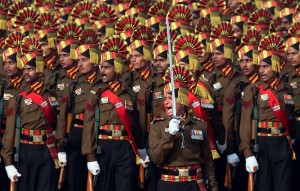
By Brig. VK Atray & Sangeeta Saxena.
15 January, 2016. When General George S. Patton Jr said – The test of success is not what you do when you are on top , success is how high you bounce when you hit the bottom – little would he have realized that generations of armies in the world would use it as the measure of strategic planning to keep themselves at state-of-the-art level and totally motivated.
As the Indian Army celebrates the day when the first Indian became the Chief of Independent India’s Army, it is the occasion for the soldiers to rededicate themselves to the defence and service of the nation and for the top brass to audit the performance and preparedness of the army, introspect and chart out the roadmap to meet present and future challenges, as also to ensure the wellbeing of the soldiers.
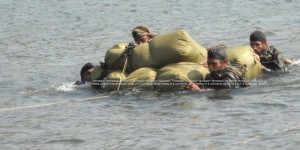
Both the not-so-friendly neighbours suddenly turning friendly does not mean the threat perception has diminished. Indian Army needs to accelerate its pace of modernisation with prioritisation being the need of the hour and execution an immediate requirement. .Manohar Parrikar, Minister of Defence has demonstrated the urgency and resolve towards long pending modernisation, sanctioning projects worth 160,000 crores. However, these are mostly long term requirements, the basic weapon and wherewithal required by the soldier continues to be low or no priority.
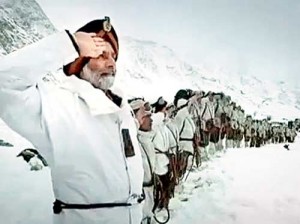
India has reached a stage that the bullet proof jackets are now mostly life expired ( in Pathankot most of the casualties are due to the bullet injuries on the chest ) and the EXCALIBRE assault rifle which has been identified as the replacement for the 5.56 INSAS is only a product improvement and does not meet the present and future requirements of an infantry man. There are of course many other such issues from the basic hand grenade, carbine , LMG, sniper rifle to boots and helmet. These have to be addressed on top priority. It is a mistake to look too far ahead. Only one link of the chain of destiny can be handled at a time, so start with the most needed change said Winston Churchill and it actually should be the guiding force to Indian procurement needs identification and procurement procedures, keeping in sync with the national security policy.
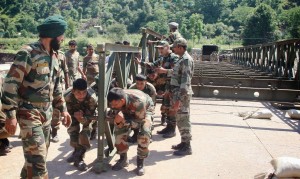
There is an absence of politico-strategic direction and ineffective mechanism at the national level to formulate a national security policy by our political leadership. It is the rendering of sound professional military advice by the Chief of Army Staff and its acceptance by the political leadership. This will help in overcoming major areas of concern, based on which follow up action on operational planning and training can be effectively taken up. The COAS aims that the needs and requirements of the Army as a whole covering all segments are met rather that concentrating on only a few areas of interest, but does the bureaucracy and political leadership innately accept it, is the million dollar question. Most immediate decisions in today’s environment will need to be taken at that level and the understanding between the three needs to become stronger.
Impetus has to be given strongly on capability development and capacity enhancement along borders to include Infrastructure development. It is a serious matter which needs to be addressed with greater urgency and efficient management of infrastructure projects. The approval by the government to the raising of a mountain corps comprising 40,000 personnel at a cost of approximately `60,000/- crore during the 12th plan (2012-17) is a boost , keeping in mind the massive infrastructure development on the Chinese side. However, the speed of this development has to fasten. Some major impediments to this slow pace of development are environmental clearances, land acquisition and funding.
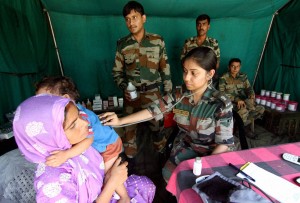
The most important needs for any army is high morale and motivation. Wars may be fought with weapons, but they are won by men. It is the spirit of men who follow and of the man who leads the victory. There has never been an iota of doubt on the Indian soldiers’ morale and motivation. But some recent decisions need to be looked into to keep them intact. In the recently released Seventh Central Pay Commission Report, recommendations have not gone down well with the rank and file, wherein they feel that the pay and allowances as also the status of the armed forces has been further degraded, reaching unacceptable levels. The 7CPC has also recommended Non Functional Upgradation (NFU) for the Armed Forces. The effects of introducing this in the Army needs to be assessed. The 6CPC anomalies remain unresolved. The three service Chiefs and in particular the Army Chief will need to address the concerns of the soldiers. If not addressed appropriately, it will adversely impact the effectiveness of the army. And this is conveying their needs which will be morale boosters and confidence builders, vociferously to the powers that be and then try and try till succeed. The Chiefs have always tried but if the bureaucracy and political leadership understand , the changes will become evident and in the timeframe needed.
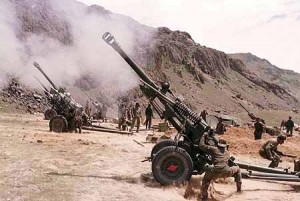
Another demotivating factor which has been discussed in low tones always is the ‘yes sir’ route up the ladder of success. It is understood that all officers are reportedly graded either ‘Outstanding’ or ‘Above Average’ as they are now being shown the points and IO’s are subjective in writing reports as they either want to please all or do not want to be the subject of anonymous complaints due to their own failings. The beneficiaries would largely be ‘Yes Men’ or sycophants. IO’s expect the RO and SRO to act as moderators in the reporting channel. As a result it appears to have had an adverse impact on the selection process as presumably mainly those graded outstanding are being promoted by selection boards. The Navy and Air Force do not show ACRs as such the Army must revert to the old system of showing only the pen picture. If the COAS expects a reaction to changing the system by taking the initiative himself, he can arrange that the process be initiated by the Ministry of Defence on the basis that the three Services should follow similar systems for ACRs. We should learn from the leader par-excellence Army has produced- Field marshal Sam Manekshaw.“ A ‘Yes man’ is a dangerous man. He is a menace. He will go very far. He can become a minister, a secretary or a Field Marshall but he can never become a leader nor, ever be respected. He will be used by his superiors, disliked by his colleagues and despised by his subordinates. So discard the ‘Yes man’.”
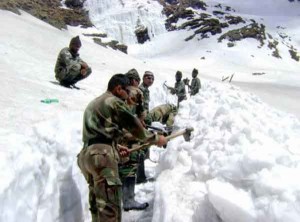
Some more points to be pondered are tenure lengths, Commanding Officers’ father figure status, employment of company commanders and juniour level leadership. Division and brigade commanders must get at least a two-year tenure in command for the sake of continuity, efficiency and accountability. Restoring the self-respect, dignity and prestige of the Commanding Officer by giving him pride of place at all events; demonstrably, so that the rank and file and the civilian fraternity are made aware, is overlooked but important. Ensure availability of company commander level officers in units, particularly those in operational areas. Focus on professionalism at junior leader level; young officer, JCO and senior NCOs by releasing them from extraneous commitments on social events and AWWA commitments. Most immediate decisions in today’s environment will need to be taken at that level.
Strict Implementation of Orders and Instructions is also at times detrimental. With the passage of time there is laxity in implementation of orders and instructions. For example, the Army Order states that name plates worn by officers should show only the officers initials and surname, that is, V Atray and not Vijay Atray. We now see the odd name plate even showing the nick name! Misuse of transport, sahayaks etc all need to be looked into and checked.
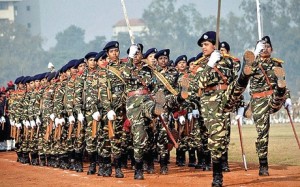
In the past couple of years, the image of the Indian Army has taken a drumming. While not finding excuses for this, it would be wrong to ignore the prevailing general environment from which the army draws it sustenance. Diminishing values and increase in corruption and nepotism in the country have not left the Army untouched. With too much money floating around, there is a trend towards ostentatious get up, expensive furnishings, lavish menus, costly presents and a competitive urge towards ‘Five Star’ culture which is contrary to military norms and reveals a tendency towards “showmanship” and misplaced priorities for personal advancement. There is an urgent need to eliminate the five-star culture that has permeated the system in recent years; to the detriment of professionalism. The example must be set from the top and ruthlessly implemented. Although instructions on the subject may have been issued in the past there is a need to ensure its implementation at all levels with a top down approach. A slight course correction is all that is required.
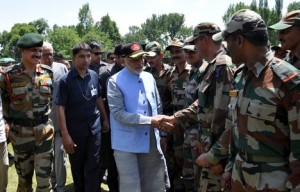
Does Indian army need to introspect? And when we start thinking about ourself, self-introspecting then we will realize that all answers to our questions lie inside us. From junior to top level of leadership in the army, officers need to just understand that they need to communicate upward what is right and needed to maintain the efficiency and morale of the troops. Things will automatically fall in place and if not at least the ball is set rolling. There is nothing wrong with the Indian Army in terms of professionalism, competence and motivation. National interest has always been the driving force for it. Whenever the nation faces a crisis, Army is the crisis manager which fishes it out of it. So all we hope is that this introspection will prevent fingers from pointing out to these brave, respected and most needed men in olive greens.




























































































































